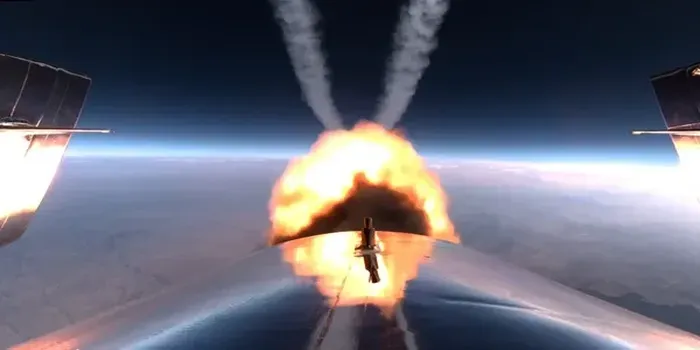- Home >
- Science
- > Exploration
What’s a suborbital flight? An aerospace engineer explains
A suborbital flight is a type of spaceflight in which a spacecraft reaches the edge of space but does not complete an orbit around Earth. These flights typically involve launching a vehicle to a high altitude, allowing it to briefly experience microgravity before descending back to the surface. Suborbital flights are often used for scientific experiments, technology testing, and space tourism. They provide a more accessible and less expensive way to experience space compared to full orbital flights.

Suborbital flights represent a fascinating segment of aerospace exploration, bridging the gap between traditional aviation and space travel. Unlike orbital flights, which complete an orbit around the Earth, suborbital flights reach the edge of space and then return to the planet without completing a full orbit. These flights typically ascend to altitudes above 100 kilometers (the Kármán line), where passengers experience a few minutes of weightlessness before descending back to Earth.
Understanding Suborbital Flight
In aerospace engineering, suborbital flight is characterized by its trajectory, which allows a spacecraft to enter space but not achieve the velocity required to remain in orbit. This means that the craft follows a high, parabolic path before descending back to Earth. Key parameters defining suborbital flights include:
| Parameter | Description |
|---|---|
| Altitude | Typically above 100 kilometers (62 miles) |
| Duration | Usually lasts from a few minutes to a couple of hours |
| Speed | Reaches speeds of approximately Mach 3 or higher |
| Weightlessness | Passengers experience a few minutes of microgravity |
The distinction between suborbital and orbital flights is essential for understanding the types of missions and experiences available. Suborbital missions are often utilized for research, technology testing, and space tourism, making them accessible to a broader range of participants.
Applications of Suborbital Flights
Suborbital flights serve various purposes, including:
- Scientific Research: Suborbital flights allow researchers to conduct experiments in a microgravity environment. This can include studies in fields such as biology, physics, and materials science.
- Technology Testing: Aerospace companies utilize suborbital missions to test new technologies in a space environment without the high costs and complexities associated with orbital missions.
- Space Tourism: Companies like Blue Origin and Virgin Galactic are pioneering suborbital space tourism, offering civilians the opportunity to experience a brief journey to the edge of space.
- Education and Outreach: Suborbital flights can be used to inspire future generations of engineers and scientists by providing educational experiences that are out of this world.
The Future of Suborbital Flight
The future of suborbital flight looks promising, with several companies actively developing and launching suborbital vehicles. The advancements in technology may lead to:
- Increased Accessibility: As technology advances and costs decrease, suborbital flights may become more accessible to the general public, opening up new opportunities for adventure and exploration.
- Enhanced Research Opportunities: More frequent flights could lead to a surge in scientific research, allowing for a greater number of experiments to be conducted in microgravity conditions.
- Development of New Technologies: Innovations in propulsion and spacecraft design will continue to evolve, improving safety and performance.
Challenges Facing Suborbital Flights
Despite the excitement surrounding suborbital flights, several challenges remain:
- Safety: Ensuring the safety of passengers during flight is paramount. Incidents in the past have underscored the importance of rigorous testing and safety protocols.
- Regulatory Hurdles: Navigating the complex regulatory environment for commercial spaceflight can pose challenges for companies looking to operate suborbital missions.
- Environmental Concerns: The environmental impact of frequent suborbital launches, including emissions and noise, will need to be addressed as the industry grows.
Conclusion
Suborbital flight is an exciting frontier in aerospace engineering, with the potential to revolutionize our understanding of space and provide unique experiences for researchers and civilians alike. As technology advances and the industry expands, we can expect to see an increase in the frequency of suborbital missions, making this remarkable segment of aerospace exploration more accessible than ever. With continued innovation, suborbital flights are poised to play a significant role in the future of space exploration and tourism.












